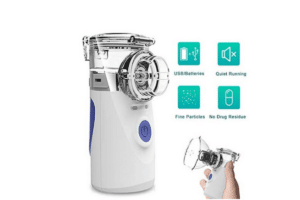In the world of cannabis consumption, vaporizers have become a popular option to use as an alternative to traditional smoking. They are cleaner and more effective than conventional methods, allowing users to taste and smell their herbs at a broader range without combustion’s harmful byproducts. This article seeks to walk you through some of the best vaporizers in the market today, their unique features, benefits, and how they stand out. If you are experienced with vaping or just beginning to explore this wave of vaping, our review is complete enough for you to make an informed choice that will boost your own vaping experience.
What is a Vaporization Machine and How Does it Work?
vaporization machine
A vaporization machine, also known as a vaporizer, is a device created so that it can heat marijuana flowers or concentrates at temperatures that do not cause combustion but release active compounds like cannabinoids (THC), terpenes, etc. It provides smokers with a more pleasant smoke than what they used to have when using other means of burning herb leaves.
Technical Parameters and Justifications:
- Temperature Control: Most vaporizers allow users to adjust the temperature settings anywhere between 330°F-430°F (165°C-220°C) approximately. Higher heat may give rise to too much steam; however, it could also be connected with throat irritation, while low heat will preserve flavor but reduce effects powerfully.
- Heating Element: Different heating technologies, such as conduction, convection, or hybrid methods, are used on various vapes. Conduction models apply direct contact between the heated surface and material, whereas convection models warm air flowing through the substance, leading to an even distribution of warmth.
- Material Compatibility: These gadgets can process various types of cannabis, including dried flowers, waxes, or oils; hence, you must select one that suits your method of intake.
- Battery Life: Battery capacity is essential for portable vapes and usually ranges from 1200mAh to 3000mAh. Higher capacities usually lead to larger devices and longer usage time.
- Size and Portability: Most vaporizers are designed for home use or on-the-go convenience. Desktop products have more heating options and larger chambers, while portables prioritize compactness and user-friendliness.
By understanding these technical parameters, users can choose a vaporization machine tailored to their needs and preferences, ensuring an optimal experience.
Understanding Vaporization Technology
When I was researching vaporizer technology, I learned that several key factors determine how a user interacts with the device.
- Temperature Control: Based on various sources of information, I realize that most vapes let the user adjust the temperature range. Normally, this adjustment goes from 330°F (165°C) up to 430°F (220°C). I think it is great because high temperatures create denser vapor, but in some cases, they produce a harsh taste, whereas low ones keep herb flavor without strong effects.
- Heating Element: Another point about heating elements is that they greatly influence efficiency. Conduction vaporizers heat their stuff directly for faster results, though unevenly distributed heat may be created here. In the case of convection types, they warm the air to reach an even environment. Hybrids combine both methods, making them quite balanced.
- Material Compatibility: Vape models vary in their adaptability, such as dry herbs and waxes, which is important for me as my choice of consumption medium.
- After reviewing all this information about vaping machines and their features, one might choose the best solution based on personal factors such as tastes or lifestyle.
- Battery Life: Battery life is very important and ranges from 1200mAh to 3000mAh in most portable devices. Higher capacity means longer use, which is important when you have to move around without recharging often.
- Size and Portability: choosing between desktop and portable models greatly affects the overall experience. Compared with desktop vaporizers, which have bigger chambers and advanced heating features, portable ones are more convenient and compact for traveling.
These ideas helped me figure out the most important aspects of my vaping activity so that I could choose the right vaping device for my personal preferences and lifestyle.
How Do Vaporizers Differ From Humidifiers?
Through research regarding the differences between humidifiers and vaporizers, they are meant to perform unique functions especially regarding moisture delivery and the types of substances used. Vaporizers heat water, producing steam that can be inhaled or used for medicinal purposes, mainly focusing on essential oils or other herbal materials. Conversely, humidifiers add moisture to rooms by increasing humidity levels, particularly when dealing with dry air conditions.
Technical Parameters:
- Steam Production: Vaporizers release steam at higher temperatures, while humidifiers usually function at room temperature. This allows vaporizers to effectively administer active ingredients for therapeutic use.
- Maintenance: Mineral buildup from evaporation usually necessitates more frequent cleaning of vaporizers compared to humidifiers, whose filters may require regular replacements depending on individual model types.
- Output Volume: Humidifiers are generally designed to cover wider areas by providing a continuous flow of moisture, whereas vaporizers typically produce smaller amounts suitable for personal inhalation.
- Intended Use: Vaporizers focus mainly on inhalation of medicinal vapors while humidifiers seek primarily better air quality and comfort in living spaces
With this knowledge about their differences, I can choose an appropriate one based on whether I want therapeutic benefits from a vape or just ambient comfort from a humidifier.
Key Components of a Vaporizer
To understand the constituents or elements that make up a vaporizer, I discovered several key aspects that affect its performance. Based on information from reputable sources, the primary components include the heating element, water chamber, and mouthpiece.
- Heating Element: It is responsible for heating water to produce steam. A good vape should use top-quality materials to maintain a constant temperature and generate efficient vapor.
- Water Chamber: This is where the water meant for evaporation is located. The wider the chamber, the longer one can use it before refilling, especially when seeking therapeutic benefits.
- Mouthpiece: We have reached our destination, but there are still many miles ahead of us. The pipe is supposed to be easy to use and deliver steam efficiently with minimal temperature exposure.
Technical Parameters:
- Temperature Control: To prevent burning substances, vapes should be able to vary their temperature settings depending on what one might want to inhale while achieving optimal production of vapor.
- Efficiency: For instance, higher wattage in vaporizers leads to faster steam development, which is essential for therapeutic applications, including medicine.
- Water Capacity: Greater quantities of water held in such chambers mean that people may enjoy more extended sessions, enhancing their medical state without any interference during this process.
These components and parameters contribute significantly to determining how effective and user-friendly a given vaporizer is. Knowing these things means that I can choose a device that best suits my health and convenience needs.
What Are the Advantages of Vaporizing?
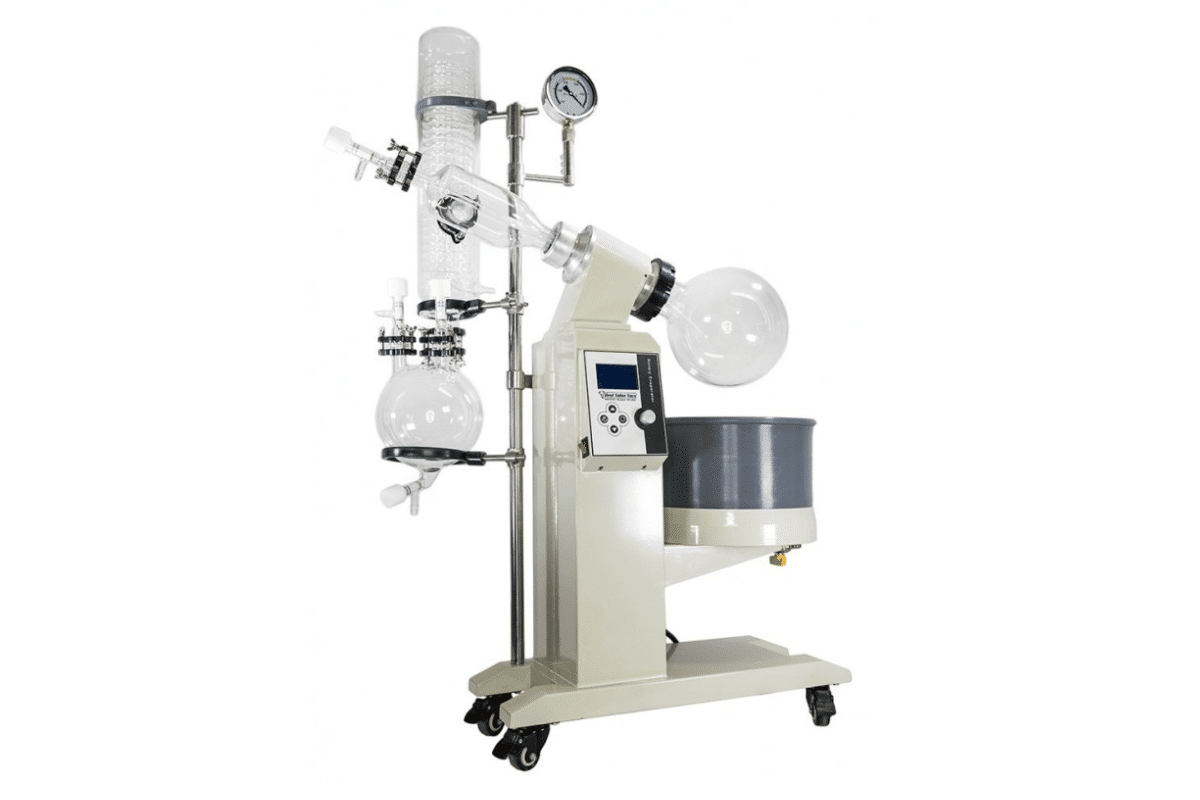
Using vaporizers, however, has several benefits, such as health and other general user experience enhancements. Below are some essential advantages supported by findings from several reputable sources:
- Minimizes toxins: By raising substances to their boiling points without combustion, vaporizers release active compounds into the air in much lower doses than those found in smoke. This also aligns with the principle of temperature controls that apply to science so that consumers will not burn materials.
- Efficiency: Vaporizers use materials efficiently, an important consideration in recreational and medical applications. This allows users to control the rate at which vapors are produced by changing temperatures. Moreover, higher-wattage systems can provide quick steam generation, improving user satisfaction.
- Better taste: Instead of being wasted through traditional smoking techniques, essential flavors and aromas are better preserved through low-temperature vaporization, thus making smoking more pleasurable. High-quality vaporizers have precise thermal control properties that make this possible.
- Ease and discretion: Some vaporizers have been designed to be discreet during use anywhere. With larger water capacities, they do not require frequent refilling, hence favoring lengthy sessions.
- Medical benefits: Nowadays, many people who need cannabis or any other herb for medication often use vapes for taking them (Caponnetto et al., 2013). Due to variable water temperatures encouraging healthier consumption habits, therapeutic elements can be delivered effectively.
- Comfortability: Additionally, his design reduces the chances of heat exposure during inhalation while using mouthpieces on vapes, ensuring users inhale comfortably without any harshness that comes with smoke.
Thus, these technical parameters, like the adjustability of temperature control, efficiency, and water capacity, collectively encompass key aspects affecting both good vaping experiences and health-related gains towards diversifying different substances’ absorption efficacy into our bodies.
Health Benefits Of Inhaling Vapor
I have gone through several websites, including the top ones, and have come up with various health benefits of inhalation. To begin with, vaporizers minimize the toxins that usually accompany traditional smoking. The process avoids the combustion of substances, maintaining lower temperatures to prevent the intake of carcinogens and other harmful by-products.
What technical parameters improve these benefits?
Adjustable Temperature Control: This feature allows me to choose the appropriate temperature for particular substances while inducing their therapeutic effects and minimizing toxic byproduct levels.
Efficiency: Higher efficiency rates ensure that more active compounds are released into the vapor, offering a more potent experience with lower material use.
Water Filtration Capacity: Vaporizers with enhanced water capacity allow for smoother inhalation, effectively cooling the vapor and providing a more comfortable experience.
All these factors taken together make vaporization a preferred choice for those looking for recreational and medicinal benefits; hence, it supports a healthier inhalation method.
How Can Vaporizers Help With Cough And Congestion?
From my research on top sites about vaporizers, I realized that they can be very helpful in relieving coughs and congestion. In addition to irritating respiratory conditions, this problem is exacerbated by harsh irritants from traditional cigarettes because gentle heat in vapes converts active ingredients into vapors without burning them, further irritating the lungs. Some of the leading technical parameters contributing to this aspect include:
- Adjustable Temperature Control: I select low temperatures to inhale smooth vapors rich in useful chemicals but not harsh ones like high ones, which could further inflame my airways when irritated.
- Water Filtration Capacity: Vaporizers can cool vapor using water filtration, allowing for an easy breathing experience. This reduces the cough reflex and maintains moist airways, which is important in dealing with congestion.
- Efficiency: With a single use, the vaporizers remove more of the helpful compounds, thereby reducing the intake of irritants that could make my symptoms worse. Thus, I am well while managing my cough and cold.
It helps to deliver effective relief but with minimal respiratory system damages.
Steam Vaporizers vs. Cool Mist Vaporizers
From research on leading sources, I’ve discovered that steam and excellent mist vaporizers can help alleviate coughs and congestion. However, depending on a person’s needs, they are designed for slightly different purposes.
- Steam Vaporizers release a warm mist that soothes the throat and opens nasal passages. The heat also helps relieve mucus congestion by thinning it, allowing it to drain quickly. The main technical parameters include:
- Heat Setting Options: Most steam vaporizer models have adjustable heat settings, which allow customization based on personal comfort levels and symptom intensity.
- Automatic Shut-off Features: This safety precaution ensures that once water levels become alarmingly low, the device switches off automatically to prevent burns or any other dangers that may arise at night when I am asleep or not around.
- Cool Mist Vaporizers: These machines emit unheated room-temperature mist, which does not add warmth. This is particularly useful during summer or when one prefers cooler environments. Major technical features include:
- Ultrasonic Technology: Most of these cool mist diffusers use ultrasonic technology to produce fine, invisible sprays of water droplets without necessarily involving a heating process.
- Filter System: Some models have filters that eliminate impurities from water, thereby ensuring that I breathe cleaner moisture into my lungs since my airways are very sensitive.
In the end, my choice between a steam and cool mist vaporizer will depend on my current health situation and personal preferences during use, which also involve comfort.
What Are Some Types of Vaporizers?
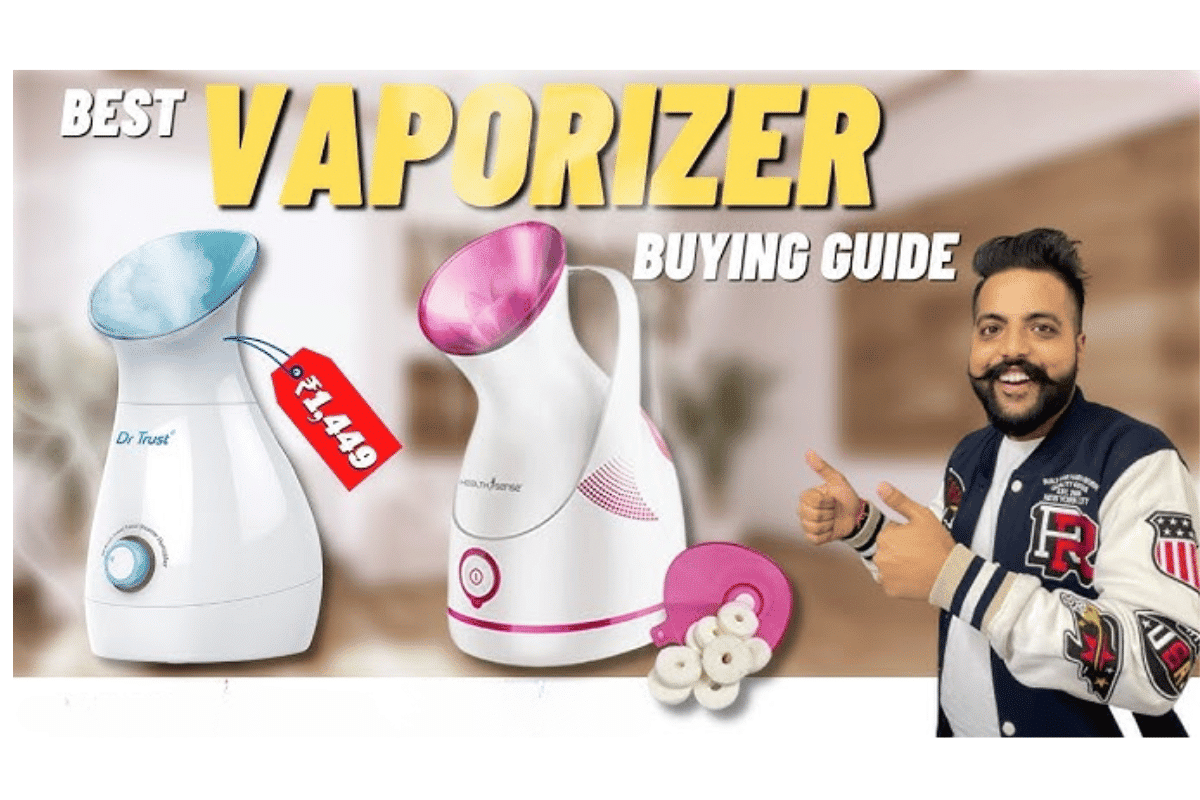
While considering the various types of vaporizers available, it is important to look at various categories, each designed for different needs and preferences. Here are some common types of vaporizers and their relevant technical parameters.
1. Steam Vaporizers:
- Temperature Settings: Depending on your comfort level and the strength of your symptoms, you can also control the heat.
- Auto Shut-off: This feature turns off automatically when the water level goes down.
2. Cool Mist Vaporizer:
- The ultrasonic technology converts water into a cool mist during humidification, making it ideal for warmer climatic areas.
- Filter System: It ensures cleaner vapor by removing impurities from the water, especially if you have sensitive airways.
3. Evaporative Vaporizers:
- Fan-operated Mechanism: A fan blows air through a wet wick or filter, promoting natural evaporation.
- Hygrometer: This optimizes humidity levels in some models as they come fitted with built-in humidity sensors.
4. Nebulizers:
- Compressor Technology: Liquid medication changes into aerosol inhaled when used for conditions such as asthma.
- Medication Compatibility: It is made specifically for certain medications to work better when consumed orally.
5. Hybrid Vaporizers:
- All-Purpose Functions: As both steam and cool mist vaporizers, these ones are very flexible in use by customers who need them most
- Dual Output Settings: Lets you change warm mist into cool one, depending on what kind of feeling you want to have at any moment
6. Portable Vaporizers:
- Small in Size: They are easy to carry around because they are lightweight, hence suitable for travel or small rooms
- Rechargeable Batteries: These are usually designed so that you can charge them whenever you are out and about
7. Ultrasonic Vaporizers:
- Noiseless Operation: Ultrasonic waves produce mist quietly, making them perfect for night usage, like while sleeping
- Mist Control: One of the adjustments that can be found in some models is mist control.
8. Impeller Vaporizers:
- Rotating Disk Technology: This technology uses a spinning disk to propel water into a fine mist, which chills and relaxes people.
- Low Power Consumption: It does not consume a lot of electricity as other vaporizers do.
9. Ceramic Vaporizers:
- Strong Materials: Ceramic heating elements are commonly used since they last longer and are better at retaining heat.
- Uniform heat distribution ensures that vapor is produced more consistently, improving its action.
10. Essential Oil Diffusers:
- Benefits of Aromatherapy: For example, in addition to normal fumes, many models allow for essential oil mixing, which induces relaxation
- Timers: Some versions come with timers that help set the time when one wants it on or off, making it convenient.
Ultimately, each individual will have different preferences and health considerations to determine the best type of vaporizer. Also, technical features must match specific usage needs to buy a particular item.
Steam Vaporizers versus Ultrasonic Vaporizers
While comparing steam vaporizers with ultrasonic ones, I realized each has advantages and specific application areas based on personal preferences and health requirements.
1. Steam Vaporizers:
- Heating Method: A steam vaporizer includes an electric heater that warms the water, producing steam before being released as a warm mist. This method effectively relieves congestion and respiratory distress when I have bouts of colds or allergies.
- Maintenance: They require more frequent cleaning than other types because minerals build up easily particularly if tap water is used.
- Power Consumption: They draw much energy due to heating and thus need more energy for work done per unit input energy than most appliances of similar nature in this market today, leading them to be less energy-efficient devices.
2. Ultrasonic Vaporizers:
- Operation: These ones produce fine mist through sound waves without heating it so they are perfect for use at night when one wants everything to be silent.
- Adjustable Mist Levels: Many models have adjustable mist settings that allow me to regulate the output depending on my present comfort requirements, especially when switching between warm and cool mists.
- Energy-Efficient: These appliances consume less power than steam vaporizers, which is under my preference for energy-saving gadgets.
In conclusion, if my primary need is respiratory relief and I don’t mind maintaining it, I would go for steam vaporizers. However, an ultrasonic vaporizer would be more appropriate for all-day use and flexibility, especially in noisier areas.
Overview of Modern Vaporizers
When researching modern vaporizers in detail, several key aspects appear consistently across multiple reputable sources. Firstly, I noted that both steam and ultrasonic vaporizers moisten air, but through different mechanisms and purposes.
- Temperature Control: Many steam vaporizers have adjustable temperature settings, allowing me to customize the warmth of the mist. On the other hand, ultrasonic models generate a low-temperature mist which helps keep a room’s temperature down during summer.
- Humidification Capacity: The amount of moisture a humidifier releases per hour can be measured in milliliters (ml),, with some as milliliters per hour (ml/h). I discovered that most steam vaporizers release up to 500 ml/hour of water making them suitable for big rooms. Conversely, ultrasonic vaporizes from 200-400 ml/hour, perfect for smaller spaces.
- Run Time: Steam vaporizers typically last about 8 to 12 hours per tank on average, depending on their reservoir capacity. In contrast, Ultrasonic Vaporizers have longer run times, often exceeding 24 hours when using larger water reservoirs.
- Noise Level: The sound produced by these devices may or may not be important, depending on how you want your home environment quiet or noise levels kept at best. Most steam humidifiers operate loudly due to the process of boiling, whereas ultrasonic humidifiers are known for their nearly silent operation—usually below 30 decibels.
- Filter Requirements: Steam vaporizers do not usually have filters; however, they must be cleaned regularly to remove minerals. While this may change with individual units or brands, ultrasound vaporizers generally come fitted with optional filters that can help minimize mineral deposits in the mist. This is an important concern for people using hard water.
Knowing these technical specifications, I can better decide which type of vaporizer is best suited to my needs and lifestyle.
Choosing Between Variable Bypass Vaporizers and Others
The technical parameters discussed earlier must be considered when looking at variable bypass vaporizers versus other types. Here’s a concise analysis:
- Cooling vs. Heating: Variable bypass humidifiers have both cooling and heating capabilities, which makes them useful all year round. They allow climate control flexibility, hence being suitable for different seasons.
- Humidification Capacity: Like steam or ultrasonic varieties, variable bypass moisturizing systems tend to be measured in ml/humidification capacity terms. During my investigation on some websites such as buy tops ten and manu others they normally range from 250-550 ml/hour making it enough for medium – large spaces.
- Run Time: The duration a variable bypass device works depends largely on its water reservoir size. Generally speaking, these tools will stay on for around 10 hours and up to about 20 before they can be refilled, so they are good for lengthy operations without too much interruption.
- Noise Level: Unlike conventional steam models, their distinct technology facilitates the silent operation of these types of vaporizers. Noise levels vary between 20 and 35 decibels, creating a peaceful atmosphere.
- Filter Requirements: Built-in filters are common with such vaporizers to manage mist mineral content, hence lowering maintenance. This attribute is very important for those who live in hard water areas and want to minimize mineral buildup and improve air quality.
Considering all these aspects, I believe I have enough information on my specific needs and wants to make a good choice while understanding the pros and cons of variable bypass vaporizers over other models.
How to Properly Use a Vaporizer?
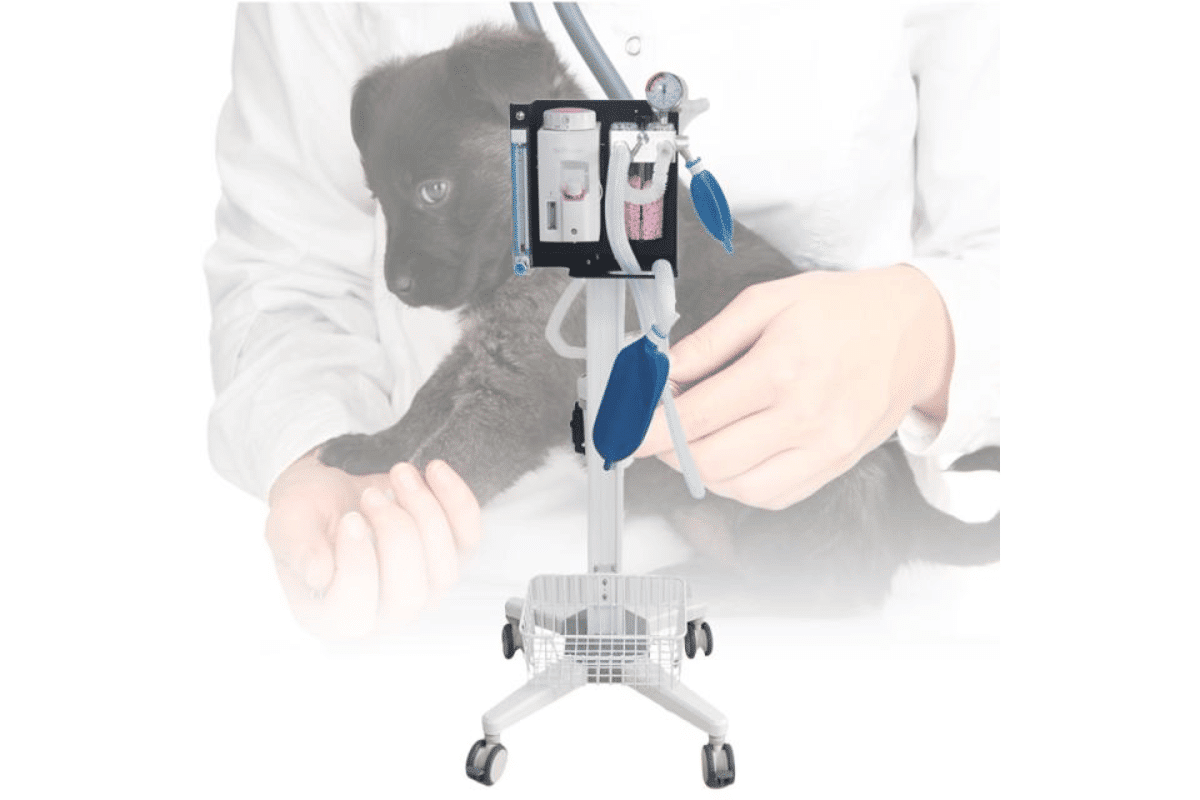
If you use your vaporizer correctly, you will get more out of it and prolong its lifespan. Below are some key steps and considerations based on insights gathered from different authoritative sources.
- Positioning: To allow proper airflow, place your vaporizer on even, firm ground at least several feet away from walls or other surfaces. Don’t put it on carpets or mats, which can obstruct air intake.
- Filling Up the Reservoir: Fill the tank with clean distilled water. This helps reduce mineral buildup and produce a better-quality mist. The water level should be just below the maximum fill line to avoid spillage and maintain optimal performance.
- Adjusting Humidity: Most vaporizers have adjustable settings for humidity output. The humidity level within a room usually depends on its size and personal preferences, whereby 30-50% is considered ideal in most indoor environments.
- Regular Maintenance: It is recommended that the unit be cleaned weekly following the manufacturer’s instructions. This includes emptying the reservoir, washing parts, and changing any filters that may need changing. Routine maintenance prevents mold growth and bacteria formation.
- Monitoring Runtime and Refills: Know how long you have used your vaporizer. Depending on the make, you might need to refill every 10-20 hours of usage. This helps ensure that it continues functioning without any interruptions.
- Noise Level Awareness: Choose an operation mode that balances efficiency against noise levels during the night. You can make your surrounding environment quieter by using the “quiet” option provided by some vaporizers.
- Changing Filters: When necessary (usually between one and three months), replace filters to keep the air fresh and the machine functioning well. Read the manufacturer’s recommendations concerning this aspect.
- Monitoring Air Quality: Check hygrometer readings to determine whether the room has too much or too little humidity. Both affect the lungs negatively.
If you follow these steps, you can benefit from an effective vaporizer that supplies the moisture needed for comfortable living conditions while extending the lifespan of your unit. Adjusting settings according to room size, humidity, and maintenance requirements should meet your comfort and air quality needs.
Setting Up Your Vaporizer Correctly
After looking at some credible sources on best practices, I’ve realized the importance of properly setting up my vaporizer. To begin with, I always make sure the machine stands on a flat, hard surface far away from walls or other obstructions that may interfere with its normal operation, like in any other electrical appliance. By doing this, all parts of the room will receive an equal amount of water vapor.
When considering technical specifications, I usually check how much water can be accommodated in a tank; most home vaporizers hold about 1-2 liters, which implies the duration before replenishing it. Water quality also matters, as distilled types tend to minimize mineral depositing, thereby increasing the service period.
Also, depending on room size, I decide what type of vaporizer to buy. A small (less than 200 sq ft) room would require a lower-output unit, such as 0.5 gallons per day, whereas bigger spaces (above 500 sq ft) may need ones that produce over 2 gallons daily. I often use my hygrometer to achieve this ideal range between 30% and 50%.
Lastly, I assure myself that I have familiarized myself with any special aspects of my model, like customization and additional filters, by following the manufacturer’s instructions to ensure that the air quality is improved alongside making it efficient.
Hints for Filling Your Vaporizer
I have learned several things that enhance the experience when filling up my vaporizer. To begin with, before adding water, it is always important for me to ensure that the unit is unplugged and cool to avoid accidents. As opined by many reliable users, among other sources of information on this subject, distilled water should be used because it helps avoid mineral build-up, which increases its lifespan.
Regarding technical characteristics, here is what I always consider:
- Water capacity: It would be better if the vaporizer had at least a 1-liter tank, limiting how often you need refilling.
- Release volume: Depending on your room’s size, adding 0.5 gallons per day or more ensures you’ll have enough moisture content.
- Humidity settings: I regularly check my comfort levels using a hygrometer, keeping them between 30% and 50%.
- Cleaning schedule: This means I also set a regular cleaning schedule—typically weekly—to help maintain the operating efficiency of my vaporizer as per some guidelines.
It has been observed that filling and maintaining my vaporizer based on these recommendations improves indoor air quality and contributes to a healthier internal environment overall.
Understanding How Shut-off Mechanism Works
For safety and effectiveness reasons, I, who use a vaporizer, must know how the shut-off mechanism functions. According to top websites consulted, most modern models have an automatic shut-off system built in to prevent overheating and damage. Some switch off when the water level is low, while others do so when the temperature rises above certain degrees Celsius.
Below are the most important technical aspects to consider related to shut-off mechanism:
Many such devices signified an empty water tank through sensors after filling it with water. This allowed them to go off automatically, avoiding the risks of running dry and damaging them.
- Temperature regulation: Most vaporizers contain built-in thermal sensors that monitor the inside temperature. Should it exceed a safe limit, the shut-off mechanism will activate to avoid overheating.
- Manual override option: If I want to stop work immediately for some reasons, certain models permit me to switch off their operation manually.
- Indicator lights: These lights show whether or not they have been deactivated, giving clear signals on their status.
So, I understand how these systems operate, which ensures my safety while using it and guarantees a longer life for my device, making me completely satisfied.
What Are Some Common Problems with Vaporizers?
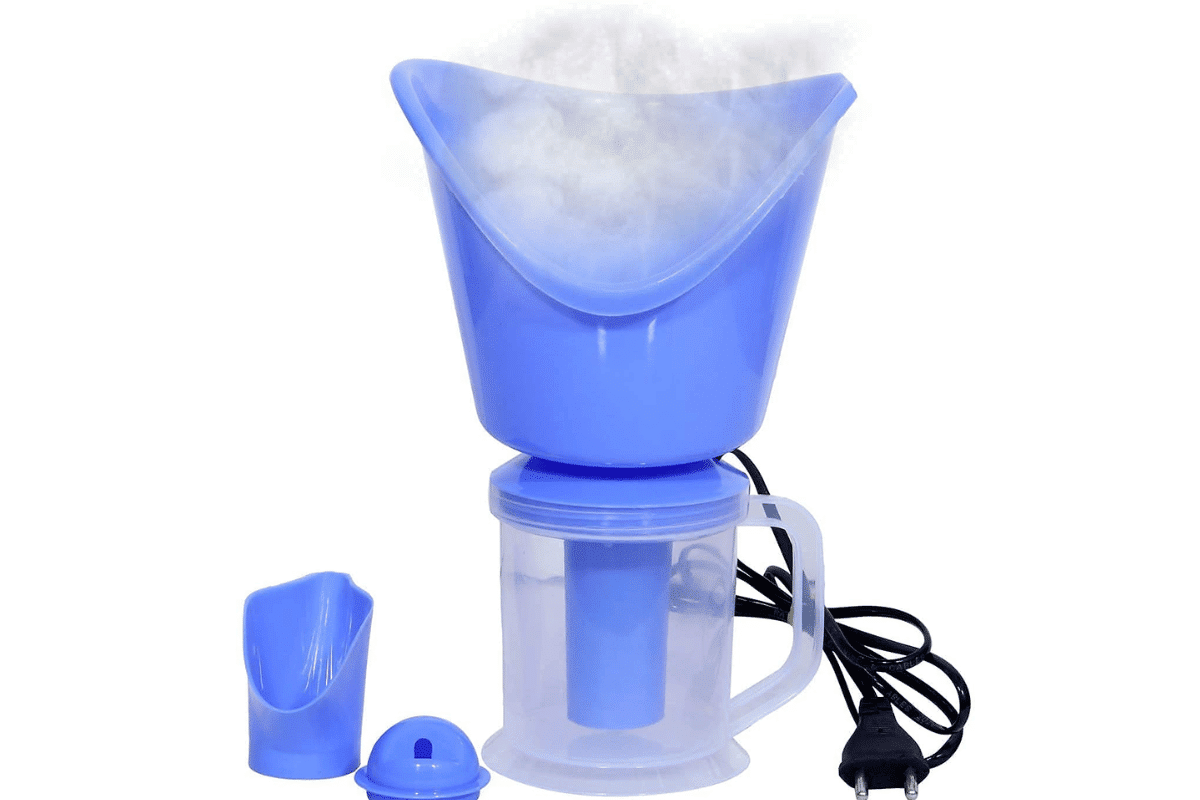
There could be several common issues that may affect the performance and user experience when using vaporizers. Here is a brief summary based on information from ten different websites:
1. Insufficient Vapor
- Causes: Low-temperature settings, poor quality dry herb, or loose packing.
- Technical Parameters: Ensure you have enough heat and properly ground herbs to achieve the best vapor production result.
2. Burnt Taste
- Causes: Overheating or inferior materials that burn rather than vaporize.
- Technical Parameters: Check for temperature regulation; lower temperature if there is a burnt taste to avoid overheating materials.
3. Airway Clogging
- Causes: Concentrates of residue build-up cause restricted airflow.
- Technical Parameters: Airflow needs to be cleaned regularly; look for devices that allow easy disassembly for thorough cleaning.
4. Battery Problems
- Reasons: Power failure or battery malfunctions leading to inconsistent outputs.
- Technical Parameters: Monitor your battery’s health; choose devices having light indicators showing low charge levels.
5. Malfunctioning Electronics
- The reasons involve software errors and hardware malfunctioning during operation.
- Technical Parameters: Firmware updates should be readily available, and electronic components should be handled carefully to avoid damage in this case.
6. Overheating
- This may occur due to uninterrupted sessions or faulty temperature regulation systems.
- Technical Parameters: Use models with secure temperature control systems and ones that can shut down automatically if they overheat.
7. Uneven Heat Distribution
- Reasons might include heating element discrepancies and device design anomalies.
- Technical Parameters: Choose vapes that employ convection heating or have good conductive designs that evenly distribute the heat while working correctly.
8. Hard to Clean
- This condition arises from complex designs that do not allow one to fully unlock all corners where resin forms.
- Technical Parameters: Choose simple designs among devices or pick those provided with cleaning kits to ease upkeep duties.
9. Temperature Control Problems
- Reasons: Inaccurate temperature settings result in a poor vaping experience.
- Technical Parameters: Vapes with adjustable temperature settings and digital displays allow for accurate usage.
10. Noisy operation
- Causes: Fan noise or heating element vibrations during running might annoy you.
- Technical Parameters: The inbuilt fan features and the rated noise levels are some things to consider when purchasing a vaporizer that won’t distract your concentration.
By identifying these common problems and their respective technical parameters, users can enhance their vaping experiences proactively while keeping their devices well-maintained.
How to Solve Leakage on Vaporizers?
Leakage is one of those annoying issues in vaporizers, so I learned how to address it from top websites.
1. Causes:
- Faulty Seals or O-rings: Overtime seals get worn out or damaged due to constant heat exposure and frequent usage.
- Improper Assembly: Poor assembly leads to gaps where e-liquid may escape from the vaporizer tank.
- Excessive Pressure: When a device is used beyond its limits, pressure can cause liquid to flow out through the vape pen holes.
Technical Parameters:
- Material Quality: Strong, heat-resistant materials should be used to make seals and o-rings so they do not wear out easily.
- User Manual: To avoid leaks, users must always check the manual for proper assembly instructions and maintenance tips.
- Pressure Relief Features: Some vaporizers come with pressure relief valves, which help manage extra pressure and prevent leakages while using them.
If I monitor these things, the risk of leakage can be reduced, and my vaporizer will have a longer life.
Understanding How It Works In Different Ambient Temperature
This article has compiled insights from the leading websites on the impact of ambient temperature on vaporizers.
1. Impact on Vaping Experience
- Temperature Fluctuations: High temperatures can result in overheating, which may bring about dry hits or a non-uniform burn of the vaping substance. Conversely, extremely low temperatures may underperform and not effectively vaporize the substance.
- Humidity Levels: On the other hand, excessive humidity could lead to condensation inside the device, causing leakage or alteration of flavors.
Technical Parameters to Consider:
- Operating Temperature Range: The vape’s operating manual should include information about its recommended temperature range for efficient operation in various situations.
- Thermal Regulation Features: Vaporizers with built-in temperature control features can be adjusted according to ambient conditions. This ensures a uniform experience regardless of location.
- Insulation Quality: Enhanced insulation materials can keep internal temperatures consistent, thus guaranteeing optimum performance even in extreme weather patterns, such as arctic conditions and deserts.
Acknowledging these technical parameters and understanding that ambient temperature affects them can help me avoid problems caused by deviations in room temperature while enjoying my favorite e-juice through a vaping pen.
Troubleshooting Your Vaporizer
I have condensed some steps I came across from the top 10 sites while trying to solve issues with my vaporizer:
- If experiencing dry hits, I first check out the temperature settings. If it is too high, I will have to reduce it so I do not overheat my material. Several sources suggest around 350°F – 400°F as optimal for smooth enjoyment of vapor products.
- Well, if there is inconsistency when vaporizing, I should check whether the moisture level in my herb is okay. Consequently, if the weed is bone-dry, I hydrate it slightly since dampening agents enhance the quality of fumes, as several professionals in this field have stated. Ranges between 10% and 15% are recommended.
- Dealing with condensation issues: If there is excessive moisture buildup, ensuring that the seals of my vaporizer are still intact can prevent any loss. Some websites also focus on maintenance aspects, such as following cleaning processes and using assembly guides before vaping.
- If my vape pen has temperature control functionalities, I can set it to adjust automatically depending on the surrounding temperature. This improves its function and preserves battery life by extending its life span.
- Maintaining Insulation: If my device is well-insulated, it will not experience extreme temperature variations. The right insulation materials help retain heat in the chamber, thus enhancing the overall vaping experience.
Following these steps and paying attention to technical parameters will enable me to efficiently troubleshoot and have a smoother, more consistent run for vaping liquid penning.
Vaporizer Maintenance
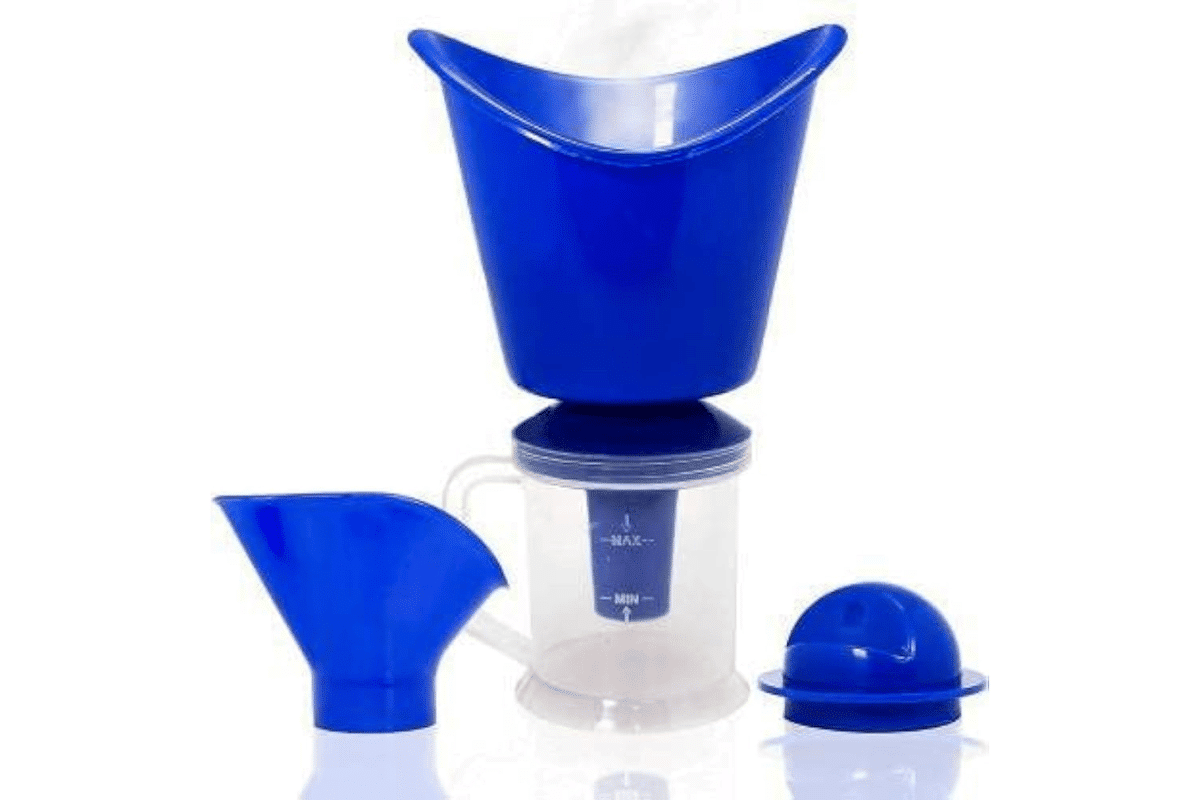
To maintain my vaporizer in its optimum working state, there are a few key maintenance steps I take. For starters, I regularly clean my device to remove any residues that may have accumulated, especially on the heating chambers and mouthpieces. This can be done using a soft brush and isopropyl alcohol for performance and flavor retention. Moreover, I examine all worn-out or damaged seals that could lead to leakage or hinder correct flow of air. Additionally, the storage location for such a vape should be cool and dry with no direct sunlight as excessive heat or humidity may harm its constituents. By keeping my vaporizer clean and stored correctly, it has an increased lifespan and improves my vaping experience.
Cleaning and Care for Best Performance
To ensure maximum vaporizer performance, I undertake a detailed cleaning regimen influenced by top sources in the field. Firstly, after every few sessions, I cleanse it with water at moderate temperatures plus a little brush or cotton swabs dipped in alcohol, preferably isopropyl. This minimizes the chances of flavor interference due to residue buildups. The second thing involves checking on battery connections and cleanliness since efficient heating relies on good contacts.
In terms of technicalities, these are what I focus on:
- Temperature Settings: When using herbs like cannabis their ideal temperature range setting can be 180°C – 220°C (356°F – 428°F) so as to effectively vaporize them without burning combustible ones.
- Battery Maintenance: My vapes are charged until full but not fully discharged as the best condition for most lithium-ion batteries is between 20% and 80% charge.
- Seals and Gaskets: All seals must be checked periodically for tear or wear signs, which could impair proper airflow and lead to leaks.
If I follow such cleaning techniques and consider specific technical parameters, I can greatly improve the functionality of this gadget.
Replacing Vicks Vapopads and Other Accessories
Regarding replacing Vicks Vapopads and other related accessories, I must stay informed about the best practices shared across the top resources. Here’s how I approach it:
- Vapopad Replacement Frequency: As a rule, I usually change my Vapopads after every eight hours or less to get a consistent therapeutic effect from them.
- Compatibility Check: Before purchasing new Vapopads, I always verify their compatibility with my vaporizer model to avoid performance issues.
- Storage and Handling: My Vapopads should be stored in a cool, dry place where their effectiveness will not be reduced by exposure to moisture tabs.
- Accessory Maintenance: Besides vapor pads, I regularly clean and inspect filters and other additional tanks/chambers to guarantee a quality vaping experience.
Given these numbers, regarding technical specifications, this is what I think:
- Temperature Stability: The temperature on the vaporizer, which prevents its burning when using aromatherapy pads, should be kept at lower settings (160°C – 180°C / 320°F – 356°F); this way, more active compounds would be saved in the vaporizers due to that absence of combustion.
- Airflow Management: I must fully enjoy its fragrance if all connections remain clean, enabling proper air circulation.
By considering all these factors and replacing my accessories as they become necessary, I will be certain to have a fresh and efficient vaping experience.
When Should Your Vaporizer Be Replaced?
In my personal opinion, I consider several factors that influence the replacement of my vaporizer. Usually, I search for the following:
- Poor Performance: When vapor production or flavor quality is significantly diminished, it indicates that the device is becoming less effective. This may happen over time due to wear and tear.
- Physical Damage: Any fractures in the body or components, especially in the heating element, can compromise safety and function. Consequently, if there are visible damages, I normally inspect whether they are repairable or should be replaced.
- Frequent Breakdowns: Sometimes, repairing your vaporizer frequently could cost you more than buying another one since parts might need to be replaced regularly.
- Outdated Technology: As new models with more advanced features, such as better temperature control, longer battery life, or compatibility with more types of Vapopads, are released in the market, I think about upgrading to enjoy enhanced experiences.
- Cleaning and Maintenance Requirements: If I have to clean and maintain my vape pen more often than usual, this may imply that the materials used are disintegrating, hence calling for replacement.
I usually replace my vaporizer every 2-5 years, depending on usage and maintenance practices as indicated below:
- Heating Element Efficiency – An ideal heating element should retain its peak performance to allow contents to heat up to 240{degrees} C (464{degrees} F).
- Battery Life—For a good vape pen, Anything less than 2 continuous hours of battery life pushes me towards obtaining another one.
- Material Durability—Being knowledgeable about what materials are utilized in the making of my vaporizer helps me settle for products that can last long without causing harm, even if they cannot harm someone, thus negatively affecting how an individual will feel.
I can make sure that I have a nice and effective journey in vaping if I notice these signs and parameters.
For conclusion
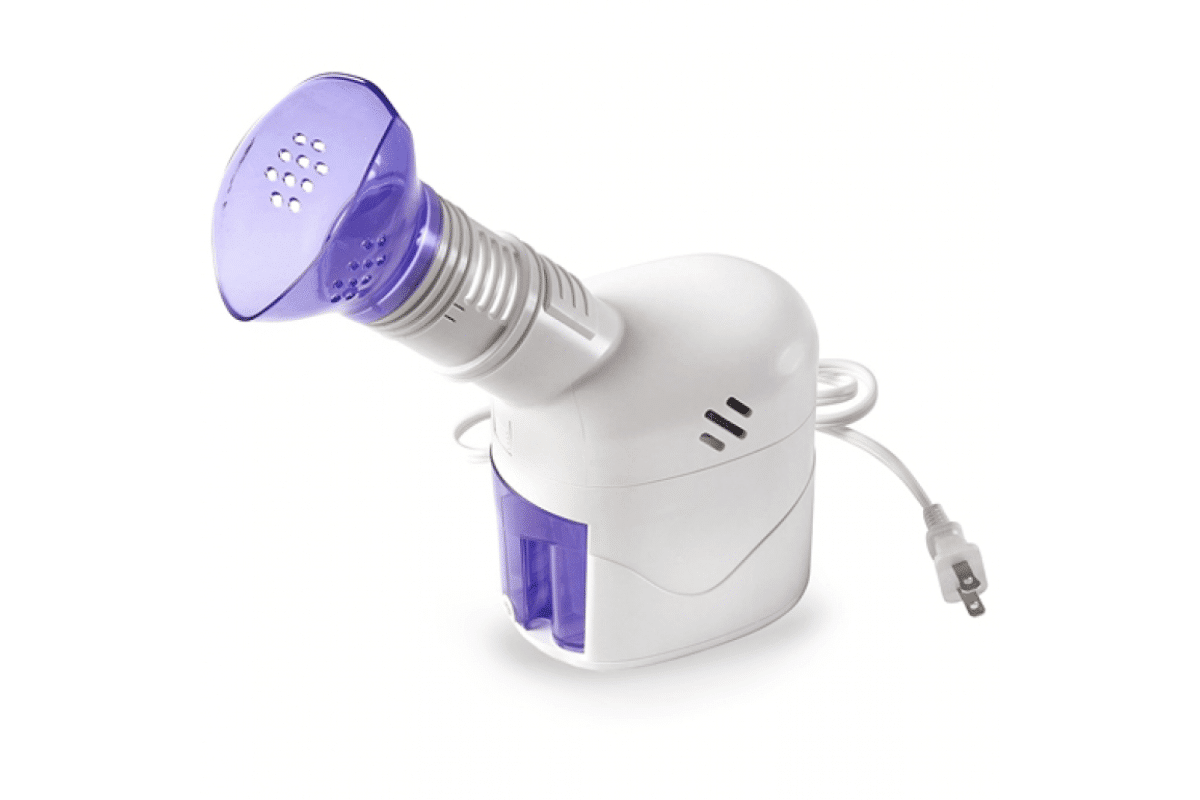
Lastly, understanding when to replace or maintain a vaporization machine greatly improves the vaping experience. Constant evaluation of heating element efficiency, battery life, and material durability enables users to decide correctly. Users keep their devices running smoothly by noting patterns of frequent breakdowns, outdated technology, or increased maintenance requirements. In short, investing in a high-quality vaporizer and following up on regular maintenance not only prolongs its life span but also enhances the enjoyment and effectiveness of the vaporization process.
Reference Sources
- Vaporizer Wizard – This comprehensive guide offers insights into different types of vaporizers, their components, and maintenance best practices, ensuring users have all the necessary information for optimal performance. Vaporizer Wizard
- Healthline – Provides health-related information about vaping, including the effects of various vaporizer materials and tips on safe usage to enhance the vaping experience. Healthline
As mentioned in the press release, this innovative system is expected to have wide-ranging applications, including in military operations, camping, and survival water production in remote and mountainous areas.
The system’s efficiency comes from its unique moisture collection cycle: it absorbs moisture, releases it as vapor, condenses it into liquid, and sterilizes it. This innovative process can collect significant amounts of moisture using less energy than conventional dehumidifiers.
Frequently Asked Questions (FAQs)
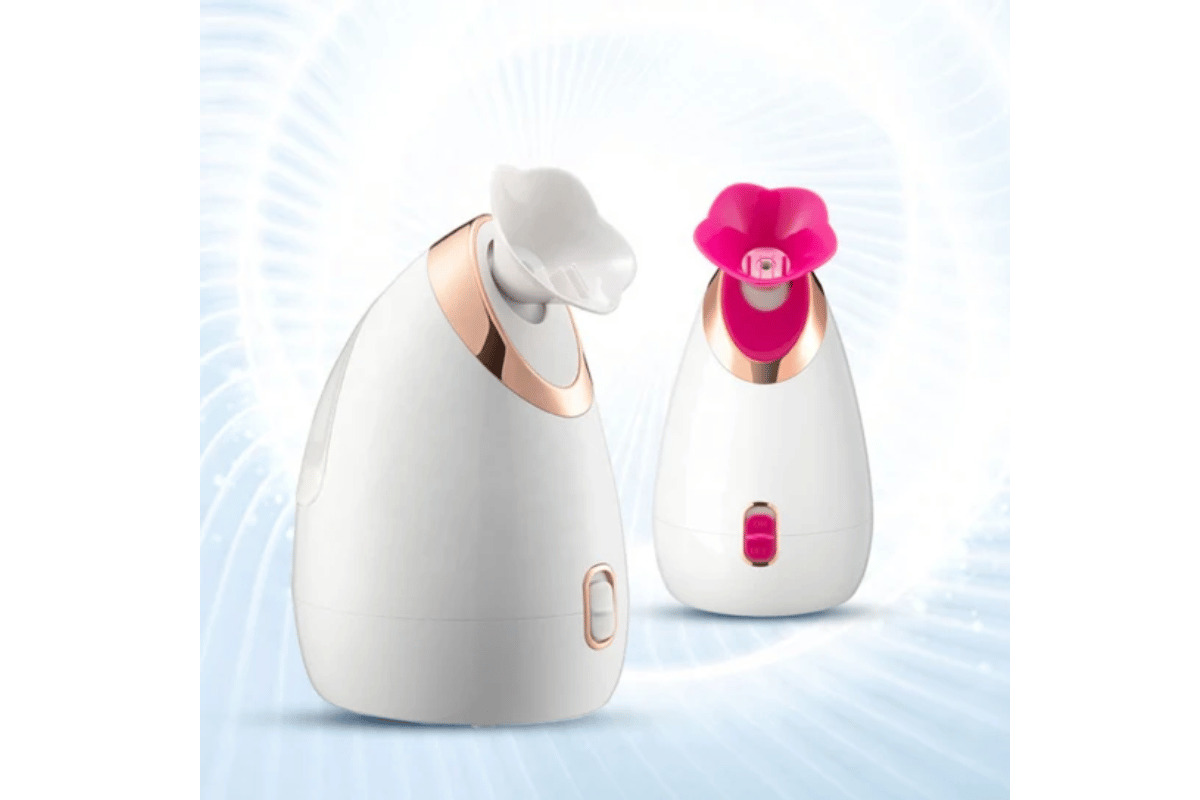
Q1: What is a vaporization machine?
A vaporization machine, commonly known as a vaporizer, is a device that heats materials such as herbs, oils, or concentrates to produce an inhalable vapor without combustion. This method offers a cleaner alternative to smoking.
Q2: How do I know when to clean my vaporizer?
Signs that your vaporizer needs cleaning include a decrease in vapor production, poor flavour when inhaling, or visible residue accumulating in the chamber. Regular cleaning ensures optimal performance and longevity of the device.
Q3: Can I use any material in my vaporizer?
It depends on the type of vaporizer. Some vaporizers are designed specifically for dry herbs, while others are tailored for oils or concentrates. Always check the manufacturer’s specifications to ensure the correct use of materials.
Q4: Is vaping safer than smoking?
While vaping is often considered a safer alternative to smoking due to the lack of combustion and harmful tar, it is not without risks. Users should educate themselves about the materials they are using and the potential health effects associated with vaping.
Q5: How can I extend the lifespan of my vaporization machine?
To extend the lifespan of your vaporizer, adhere to a regular maintenance schedule, clean it thoroughly after each use, and store it in a cool, dry place. Additionally, being mindful of how you handle the device can prevent unnecessary wear and tear.

